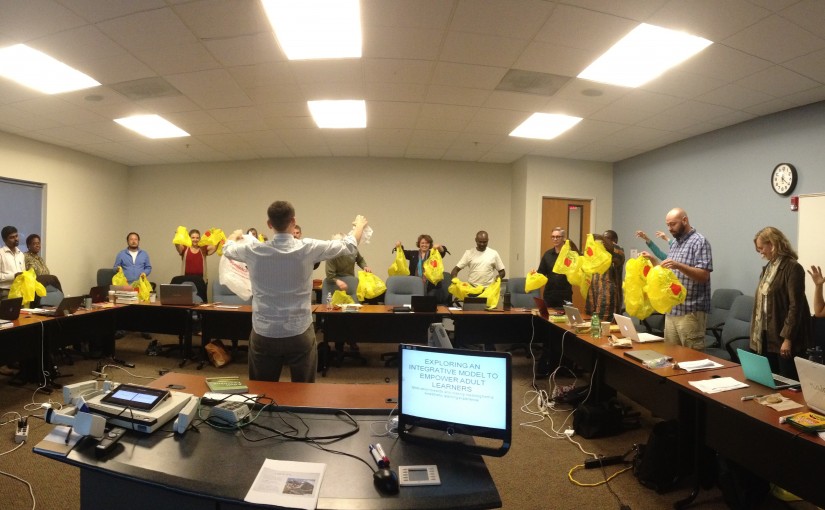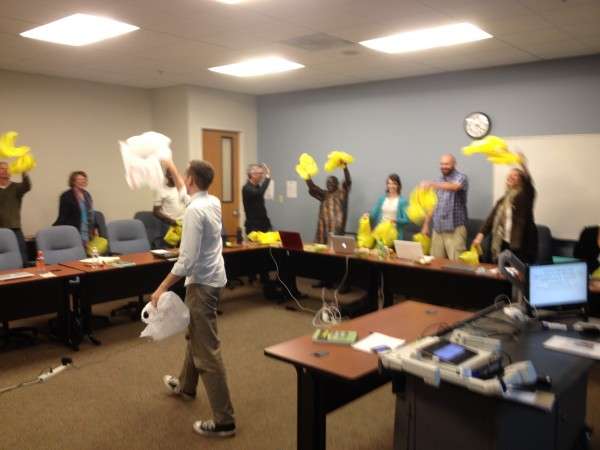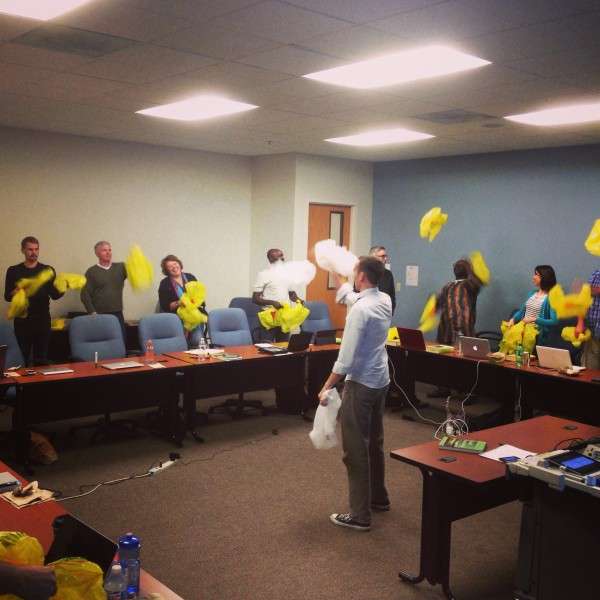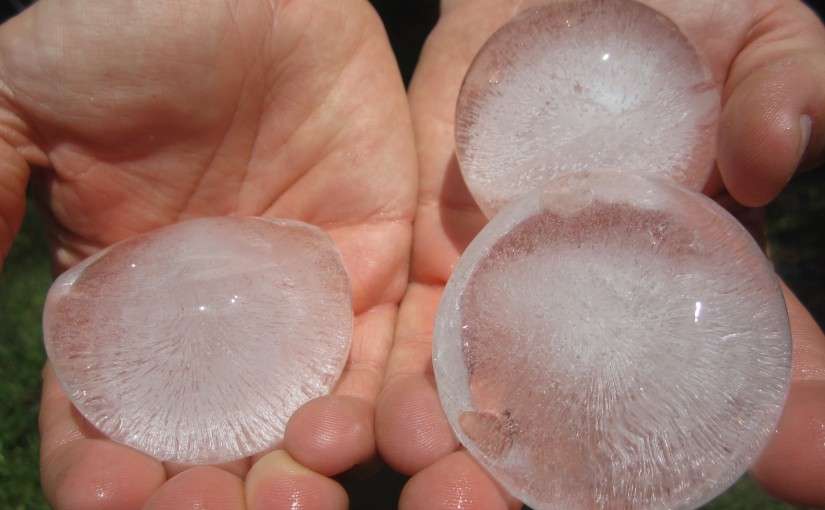Last month I successfully juggled while flying down a zip line. I had tried the feat three or four times previously and I always dropped about halfway down the line. This most recent time, though, I made it the whole way (about 100 yards). Here is the video evidence, followed by some thoughts on the science behind it….
Between doing this zip line juggle and juggling while running (“joggling”), people often make comments to me that imply their confusion over the science of how it works. Many people think I need to throw the balls ahead of me in order to juggle while in forward motion.
The answer is, no, I do not. The balls are already in forward motion with me as I’m running or flying on a zip line. They are traveling the same speed as me, so when I toss them upward, they fly both up and forward without any extra forward effort on my part. If you were to stand in the back of a moving pick-up truck (do not attempt) and toss a basketball straight up, it would not fly behind you but rather in front of you as if you were standing still (as long as you are not going so incredibly fast that there is crazy wind resistance).
The problem with the zip line, though, is not the forward motion, but rather the spinning motion. That is what has always messed me up in the past. When I spin while juggling, I do need to overcompensate my throws in a particular direction to make up for the spin. When I successfully juggled down the zip line, I just happened to get the throws right based on my spins. It was tough, but certainly possible.







